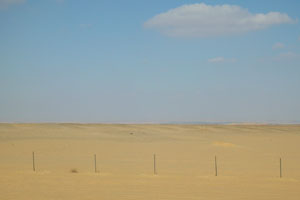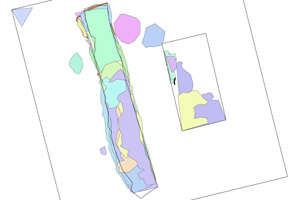|
|
|
|
|
|
|
|
 |
|
 |
|
|
|
|
|
|
|
|
|
|
To record the spacial progress of the excavations and enter this data into a geoinformation system for analysis and publication. | |
|
|
-
November/December
2008 - November/December 2009 - November/December 2010 |
|
|
|
A multinational team of archaeologists and geologists, directed by Willeke Wendrich (UCLA), René Cappers (Rijksuniversiteit Groningen) and Simon Holdaway (University of Auckland). | |
| Results: | Kom W is remarkable as it is one of the very few stratified Neolithic sites in Egypt, most of which are either surface scatters ir deeply burried under Nile deposits and later habitation layers. Only after careful examination of the site, including a magnetometric survey and test excavations, it became clear that previous excavators, directed by Gertrud Caton-Thompson, had left baulks of about 2 feet (60 cm.) wide. This enabled the study of Kom W, or rather its remaining baulks, with modern techniques, including radio-carbon dating (C14) and geoinformation systems (GIS). This allows for the excavations to be focussed on providing time depth to the Neolithic in northeast Africa. | |
| Approximate position and date of the site: | Kom W is located on the northeast shore of Lake Qarun (in the Fayum Depression), just west of Karanis and the K-pits, an aera that is currently being developed for agriculture. It has previously been dated to about 4500 year BCE. | |
| Short description of the site: | Kom K is located in the desert northeast of Lake Qarun, in the Fayum depression, considerably above the current water level in the lake. The site consists of a low hill covered by stone debitage, pot sherds and bone fragments (mostly fish bones). No structures are visible except the traces left by previous excavators and visitors. Kom W was probably always a higher area, attracting human activity for unclear reasons, which was made a hill by the deflation of the surrounding desert, locally prevented by the high desity of artifacts. In the direct surroudings are several ancient hearths. The area further east of Kom W is under development for agriculture and the site itself was visted regularly, by tourists looking for artifacts and the military looking for radio reception, until a fence prevented further access. | |
| Additional remarks: | My work in Fayum would not have been possible without the support of the Cotsen Institute of Archaeology at UCLA. | |
| HOME |
|
|
 |